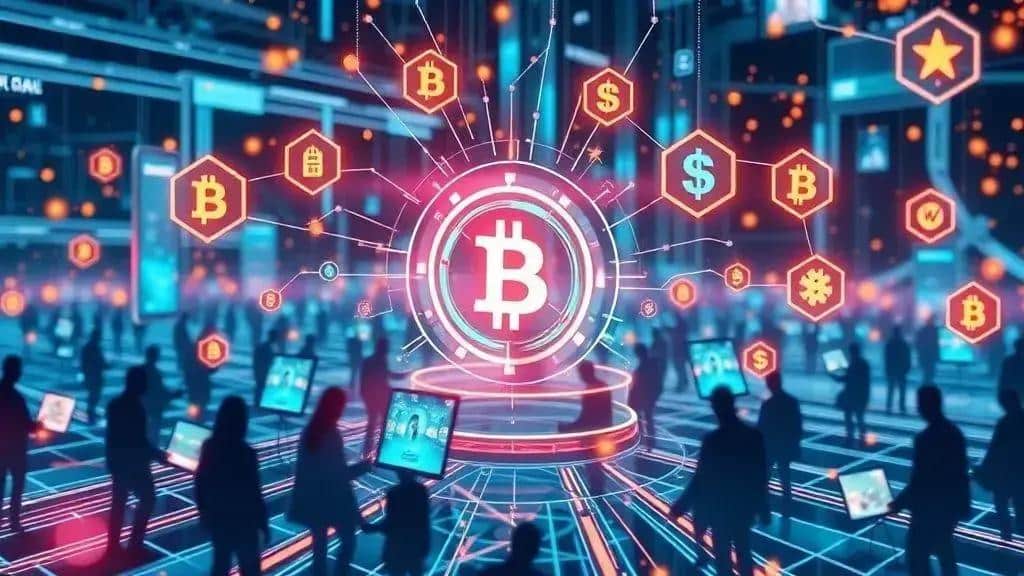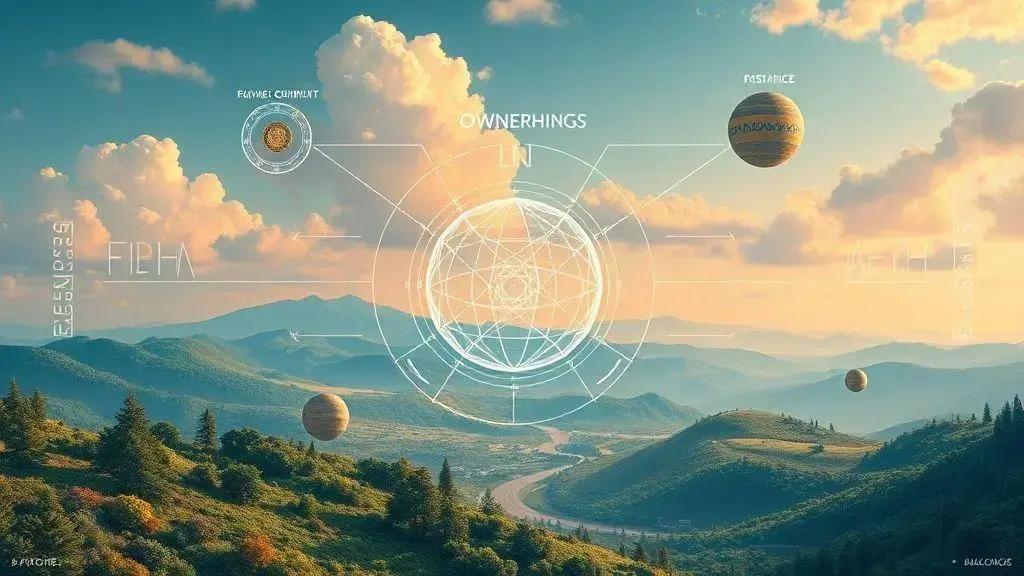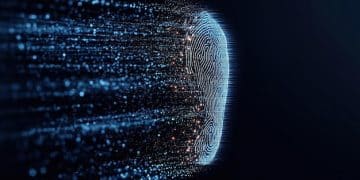How Web3 is transforming digital ownership in 2023

Web3 is transforming digital ownership by enabling decentralized control and transparency through blockchain technology, allowing users to securely own and manage their digital assets like NFTs and participate in decentralized finance.
How Web3 is transforming digital ownership is a topic worth exploring. Have you ever thought about what true ownership means in the digital world? As we navigate through this new frontier, it’s essential to understand the implications and opportunities that arise.
Understanding Web3 and its principles
Understanding Web3 and its principles is essential as we move into a new digital era. This innovative technology represents a shift towards a more decentralized internet, where users have greater control over their data and digital assets.
The core principle of Web3 revolves around the idea of decentralization, built primarily on blockchain technology. Unlike traditional systems, where power is concentrated, Web3 distributes authority among its users, promoting transparency and security.
The key components of Web3
There are several key components you should know about:
- Blockchain technology: This is the backbone of Web3, enabling secure and transparent transactions without intermediaries.
- Smart contracts: These self-executing contracts automate agreements, reducing the need for third parties.
- Decentralized applications (dApps): These applications operate on a peer-to-peer network, providing services directly between users.
- Tokenomics: The economics of blockchain tokens, which incentivize user participation and governance.
Understanding these components helps clarify how Web3 enhances digital ownership. Instead of relying on a central authority, users can own and control their assets. For instance, non-fungible tokens (NFTs) are a prime example of this. They allow artists and creators to sell digital content directly, keeping most of the profits.
Moreover, Web3 fosters a community-driven environment. People can collaborate and innovate without hierarchical restrictions, leading to unique opportunities in various fields, from finance to art. Users now engage in governance through decentralized autonomous organizations (DAOs), where they can influence decisions that affect their digital properties.
In conclusion, as we deepen our understanding of Web3 and its principles, it becomes clear that this evolution in technology is redefining how we perceive ownership in the digital landscape. Transitioning to this new paradigm allows for a more equitable, transparent, and user-centric internet experience.
The role of blockchain in digital ownership

The role of blockchain in digital ownership is significant and transformative. It serves as the foundation for a new way of handling assets online, ensuring security and transparency.
By using blockchain technology, users can record transactions in a decentralized manner. This means that no single entity controls the data, making it almost impossible to alter or counterfeit ownership records. With each transaction securely logged, users can trust that their digital assets are safe.
Key benefits of blockchain for digital ownership
Here are several advantages of incorporating blockchain into digital ownership:
- Transparency: Every transaction is visible on the blockchain, allowing users to verify ownership without confusion.
- Immutability: Once data is recorded, it cannot be changed, preventing fraud.
- Decentralization: This reduces reliance on central authorities, allowing individuals more control over their assets.
- Accessibility: With blockchain, users can access and manage their ownership from anywhere in the world.
Blockchain also facilitates the creation of smart contracts. These contracts automatically execute when conditions are met, reducing the need for intermediaries. For example, artists can sell their work as NFTs, ensuring they retain ownership rights while receiving payment directly.
As the digital landscape evolves, blockchain continues to redefine ownership structures. It empowers individuals by providing a direct relationship with their assets. This shift can create new business models, from digital art marketplaces to real estate transactions.
In addition, blockchain encourages innovation. Decentralized finance (DeFi) platforms are emerging, enabling users to lend, borrow, and earn interest on their assets without traditional banks. This technology creates opportunities for financial inclusivity, allowing anyone with internet access to participate.
Practical examples of digital ownership in Web3
Practical examples of digital ownership in Web3 showcase how this new technology is changing various industries. These examples help us understand the potential and functionality of decentralized systems.
One of the most notable instances of digital ownership in Web3 is the rise of non-fungible tokens (NFTs). Artists and creators are now able to tokenize their work, providing unique ownership and provenance tracking. For example, a digital artwork sold as an NFT allows the artist to claim royalties on future resales.
NFT Use Cases
Several key areas benefit from NFT integration:
- Art: Artists can gain more control and earn directly from their creations.
- Gaming: Players can truly own in-game items and trade them freely.
- Collectibles: Digital collectibles enable fans to own and trade rare items.
- Music: Musicians can sell their work and receive fair compensation without intermediaries.
Another practical example is in the real estate sector. Web3 enhances property management by allowing digital ownership records on the blockchain. This process simplifies transactions and increases transparency. Buyers can verify ownership history and avoid fraudulent deals.
Additionally, decentralized finance (DeFi) platforms are revolutionizing financial services. For instance, users can lend or borrow digital assets directly without relying on banks. This method not only increases accessibility but also allows individuals to have real ownership of their funds.
Through community-driven governance, users can vote on project developments and changes, becoming active participants. This involvement further solidifies their digital ownership experience.
Web3 is also making strides in academic credentials. Institutions are issuing diplomas and certificates as digital assets on the blockchain, allowing graduates to have verifiable proof of their qualifications. This change makes job applications smoother and diminishes the risk of certificate fraud.
Future implications of Web3 on ownership models

Future implications of Web3 on ownership models are vast and revolutionary. As this technology evolves, it will continue to reshape how we perceive and manage ownership in the digital world.
The shift towards decentralization is one of the key implications. Traditional ownership models often rely on centralized authorities, but Web3 allows users to have direct control. This means that individuals can manage their assets without needing a middleman, enhancing their rights and establishing a more equitable system.
Potential Changes to Ownership Models
Several areas indicate where ownership models may evolve:
- Fractional Ownership: Using blockchain, high-value assets (like real estate or art) can be owned by multiple people through tokenization.
- Collaborative Ownership: Communities can collectively own digital assets, such as music or art, and share profits.
- Dynamic Ownership Rights: Rights associated with digital products could be adjusted in real-time based on smart contracts.
- User-Driven Governance: Users will have a say in how platforms operate, directly influencing ownership rules.
This new era of ownership can democratize access to various markets. For example, decentralized platforms can help people invest in crowdfunding projects without hefty initial investments. Also, users can earn from their data by participating actively in platforms, receiving compensation directly instead of allowing companies to profit from their information.
The rise of decentralized autonomous organizations (DAOs) will further change how ownership is structured. DAOs enable users to gather around a shared goal, allowing them to vote on decisions and manage resources collaboratively. As a result, this could lead to more community-centered ownership models.
Moreover, as digital identities improve through Web3, individuals may find new ways to prove authenticity and ownership over their assets. This change can have implications across various industries, from art to finance. New verification methods can help prevent fraud, creating more trust in transactions.
FAQ – Common Questions About Web3 and Digital Ownership
What is Web3 and how does it relate to digital ownership?
Web3 is the next generation of the internet that emphasizes decentralization, allowing users to have direct control over their digital assets and data.
How do non-fungible tokens (NFTs) function in Web3?
NFTs are unique digital assets created on blockchain technology that provide proof of ownership for digital items like art, music, and collectibles.
What role does blockchain play in digital ownership?
Blockchain provides a secure and transparent way to record transactions, ensuring the authenticity and ownership of digital assets without intermediaries.
How can decentralized finance (DeFi) impact ownership in the future?
DeFi allows individuals to lend, borrow, and earn interest on their assets without traditional banks, enhancing user control and participation in financial transactions.





